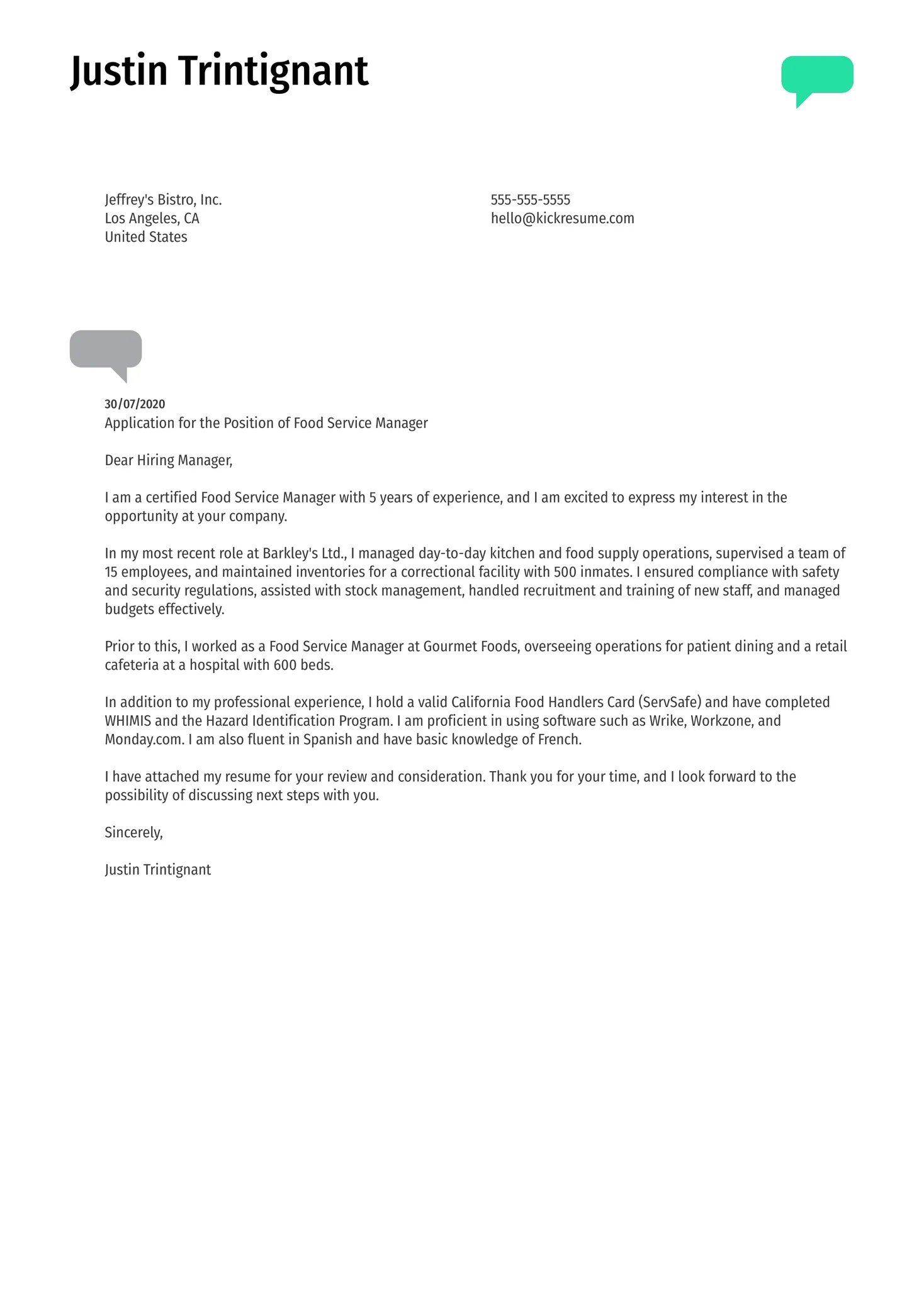Key Elements of a Restaurant Supervisor Cover Letter
A well-crafted restaurant supervisor cover letter is your first impression. It’s your chance to showcase your skills, experience, and passion for the role. This guide will help you create a compelling cover letter that grabs the hiring manager’s attention and increases your chances of landing an interview. By following these steps, you can ensure your cover letter effectively highlights your qualifications and distinguishes you from other applicants. Remember, attention to detail and a professional tone are crucial, as this document serves as a direct representation of your abilities and commitment to the restaurant industry. Ensure you customize each letter to the specific job and restaurant, showcasing your understanding of their needs.
Contact Information & Date
Your Name and Contact Details
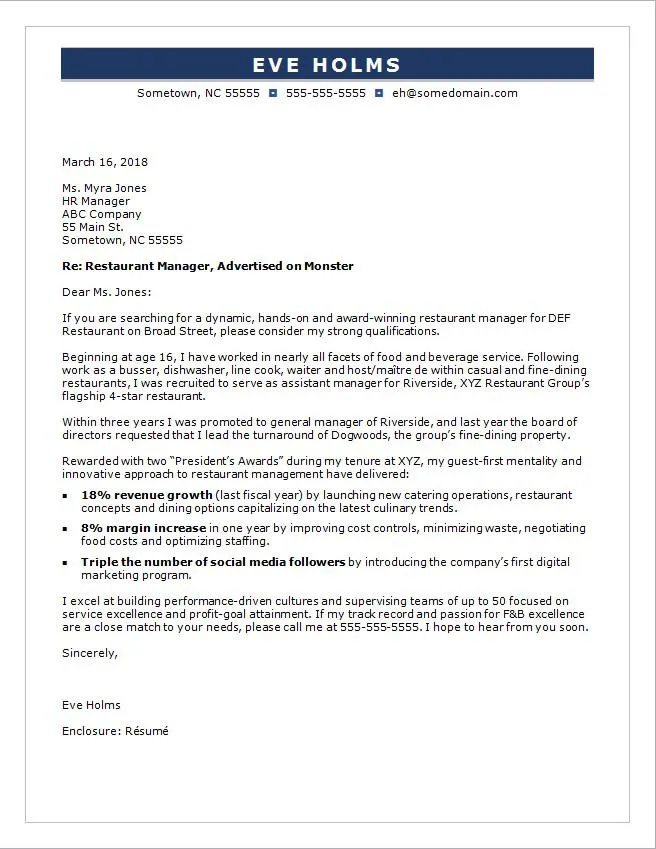
Start with your full name, address, phone number, and professional email address. Ensure your email address sounds professional. This information should be at the top of the letter, typically left-aligned. This provides the hiring manager with immediate access to your contact information, making it easy for them to reach out to you regarding the position. Double-check the accuracy of your details; a single typo could result in missed opportunities. Keep it clean and easy to read. A well-formatted contact section presents a polished first impression, indicating your attention to detail.
Date of Application
Directly below your contact information, include the date you are submitting the cover letter. This is a standard practice that helps the employer keep track of when they received your application. The date should be formatted correctly (e.g., Month Day, Year) and clearly visible. Correctly dating your letter ensures that the employer can easily reference it within their records and indicates the timeliness of your application. This detail adds a layer of professionalism and organizational clarity to your cover letter.
Employer Contact Information
Hiring Manager’s Name and Title
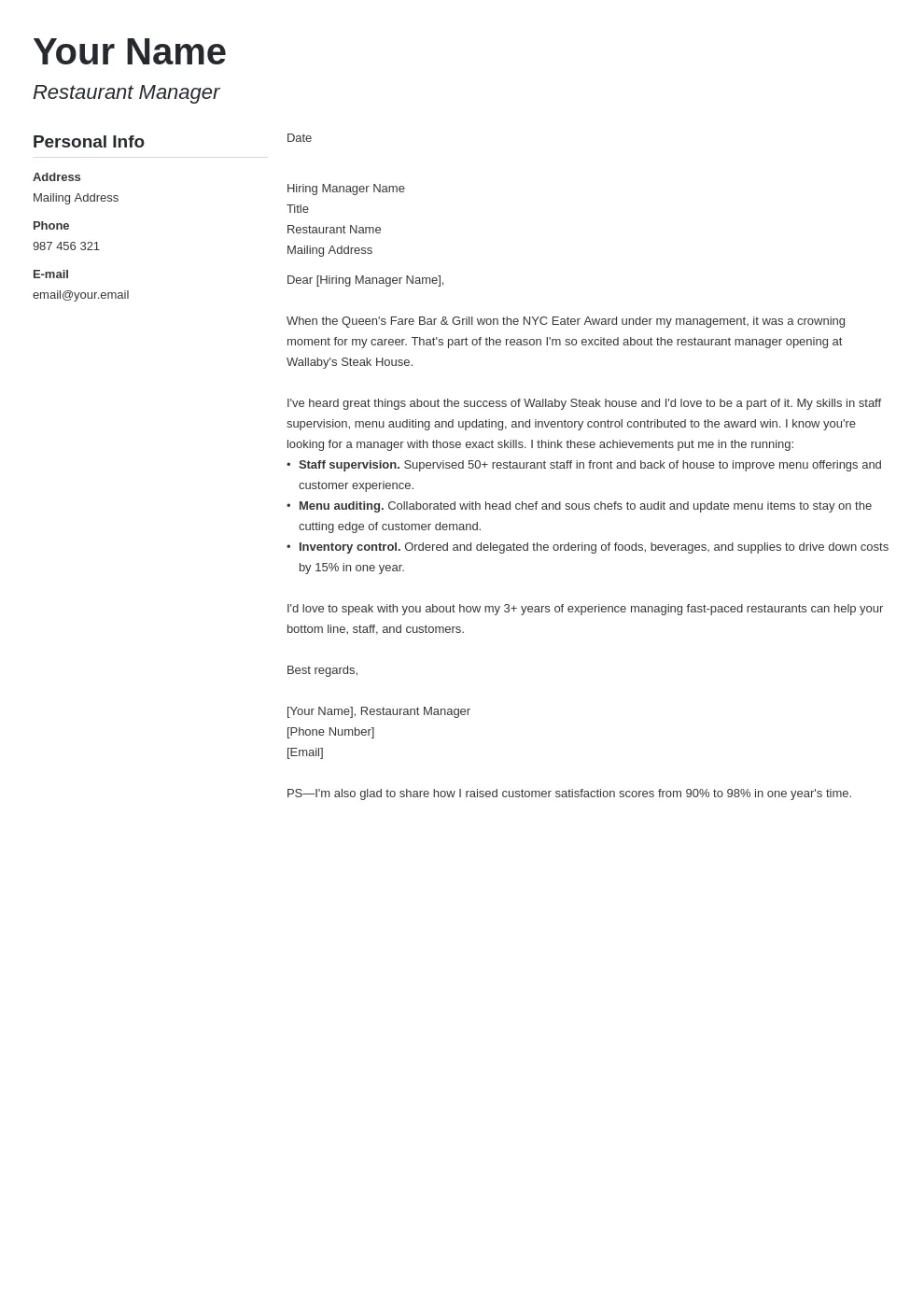
If possible, address the cover letter to a specific person, such as the hiring manager or the restaurant’s general manager. Research the restaurant or check the job posting to find the correct name. Addressing the letter to a specific person adds a personal touch and shows that you’ve taken the time to research the opportunity. If you cannot find a name, use a professional greeting like “Dear Hiring Manager.” Personalizing your letter demonstrates your proactive approach and your genuine interest in the role and the company.
Restaurant Name and Address
Include the restaurant’s name and address directly beneath the hiring manager’s information. Ensure that the restaurant’s name is spelled correctly and that you have the correct address. This provides the employer with their information for easy reference and confirms your attention to detail. This is a simple yet essential step in creating a professional cover letter. If you are unsure of the address, verify it using the restaurant’s website or a reliable online search. This information helps ensure that your application aligns with the specific restaurant’s details.
Professional Greeting
Use a professional and appropriate greeting. “Dear Mr./Ms. [Last Name]” is ideal if you know the hiring manager’s name. If not, “Dear Hiring Manager” or “Dear [Restaurant Name] Team” is acceptable. Avoid informal greetings like “Hi” or “Hey.” A professional greeting sets the tone for the rest of the letter and demonstrates your respect for the hiring process. The greeting should be followed by a colon. It shows professionalism and respect from the very beginning of your cover letter, setting a positive tone for the rest of your communication. It also indicates that you’re serious about the application.
The Body of Your Restaurant Supervisor Cover Letter
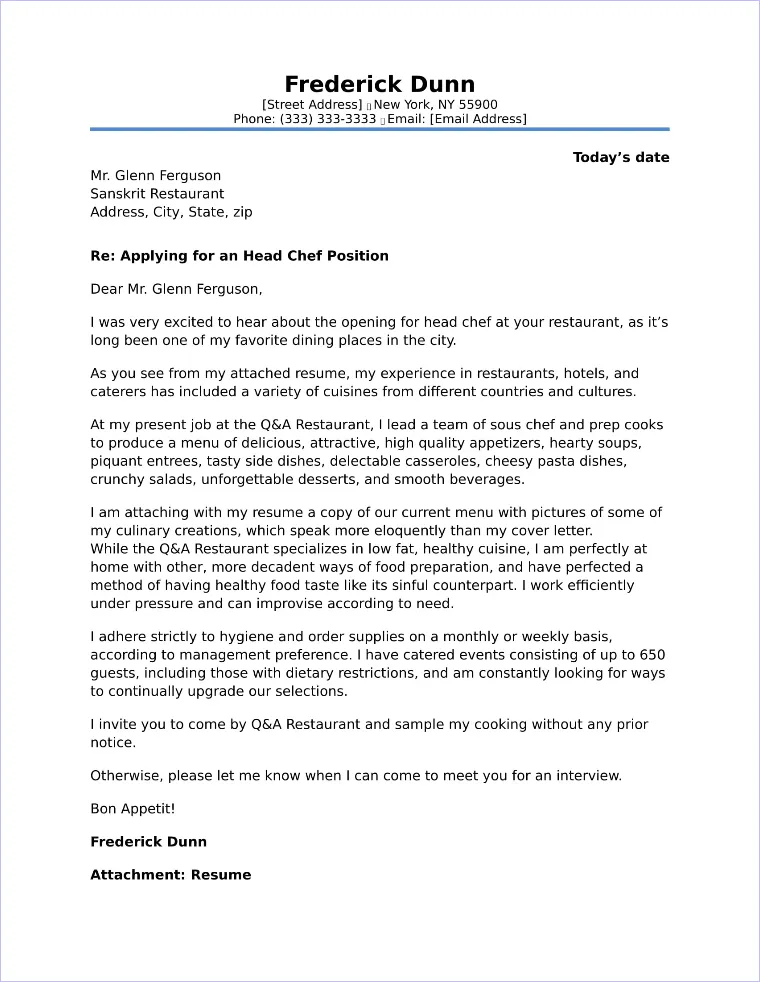
Opening Paragraph
The opening paragraph should immediately state the position you’re applying for and where you saw the job posting. Briefly mention your interest in the restaurant and what initially attracted you to the position. This paragraph is your chance to grab the reader’s attention. Be concise and enthusiastic, highlighting your key selling points. Make it clear why you are interested in the restaurant and why you think you are a good fit for the role. A strong opening sets the stage for a successful cover letter, making the reader want to learn more about you. Avoid generic openings; make it specific to the role and the restaurant.
Highlight Your Qualifications
This is the core of your cover letter. Focus on showcasing your relevant skills and experiences. Tailor this section to align with the specific requirements of the job description. Provide examples and quantifiable results to support your claims. The employer will be looking for proof that you possess the necessary skills and have a history of achieving positive outcomes. Use action verbs to describe your experiences, and emphasize the value you brought to previous roles. This section is crucial to demonstrating that you meet the job’s demands and are capable of succeeding in the role.
Relevant Experience
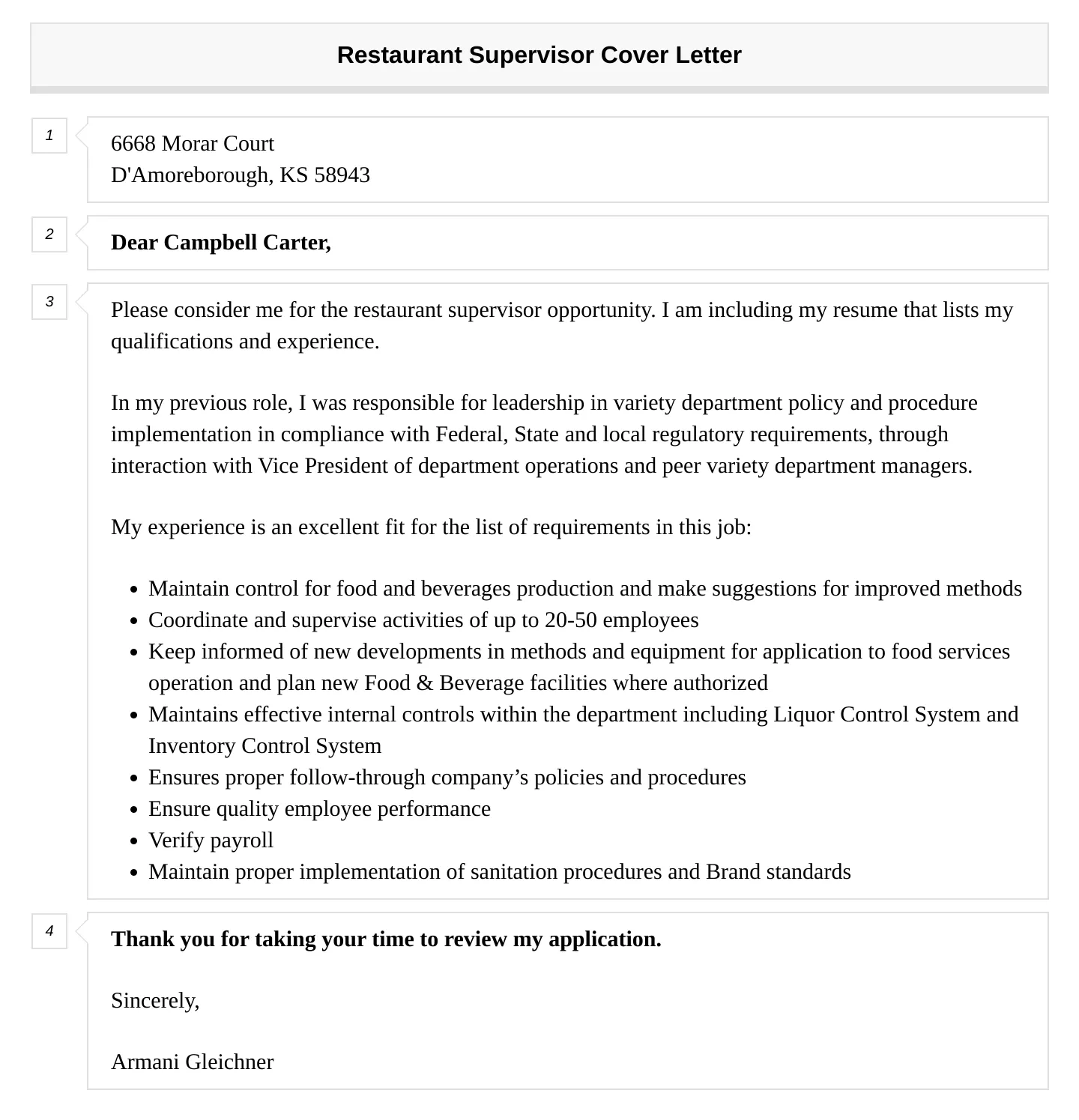
Detail your previous restaurant supervisor experience, emphasizing roles where you managed teams, handled customer issues, and ensured smooth operations. Mention specific responsibilities, such as scheduling, inventory management, and staff training. Use the STAR method (Situation, Task, Action, Result) to describe your accomplishments. The STAR method helps you organize your thoughts and provide a clear narrative of your achievements in previous roles. Quantify your achievements whenever possible (e.g., “Increased customer satisfaction scores by 15%”). Clearly outline how your past experiences have prepared you for the restaurant supervisor role, illustrating your adaptability and readiness to excel.
Key Skills and Abilities
Identify and showcase your key skills and abilities, such as leadership, communication, problem-solving, and conflict resolution. Provide concrete examples of how you have used these skills in previous roles. Mention any relevant certifications or training you’ve completed. Make sure to use keywords from the job description to align with the restaurant’s needs. Demonstrate how you can bring value to the restaurant by utilizing your skills. Showing that you possess the skills they’re looking for increases your chances of being selected for an interview. It also emphasizes your overall ability to handle various challenges that may arise in this role.
Quantifiable Achievements
Use numbers and data to quantify your achievements. Instead of saying “Improved customer service,” say “Improved customer service scores by 20% within six months.” Provide specific examples of how you have increased sales, reduced costs, or improved efficiency in previous roles. Numbers make your achievements more credible and memorable. Quantifiable data demonstrates your ability to deliver results and your value to the restaurant. Highlighting measurable results provides tangible evidence of your success and your capacity to contribute to the restaurant’s goals. Your goal is to showcase that you have a history of enhancing business operations.
Express Enthusiasm
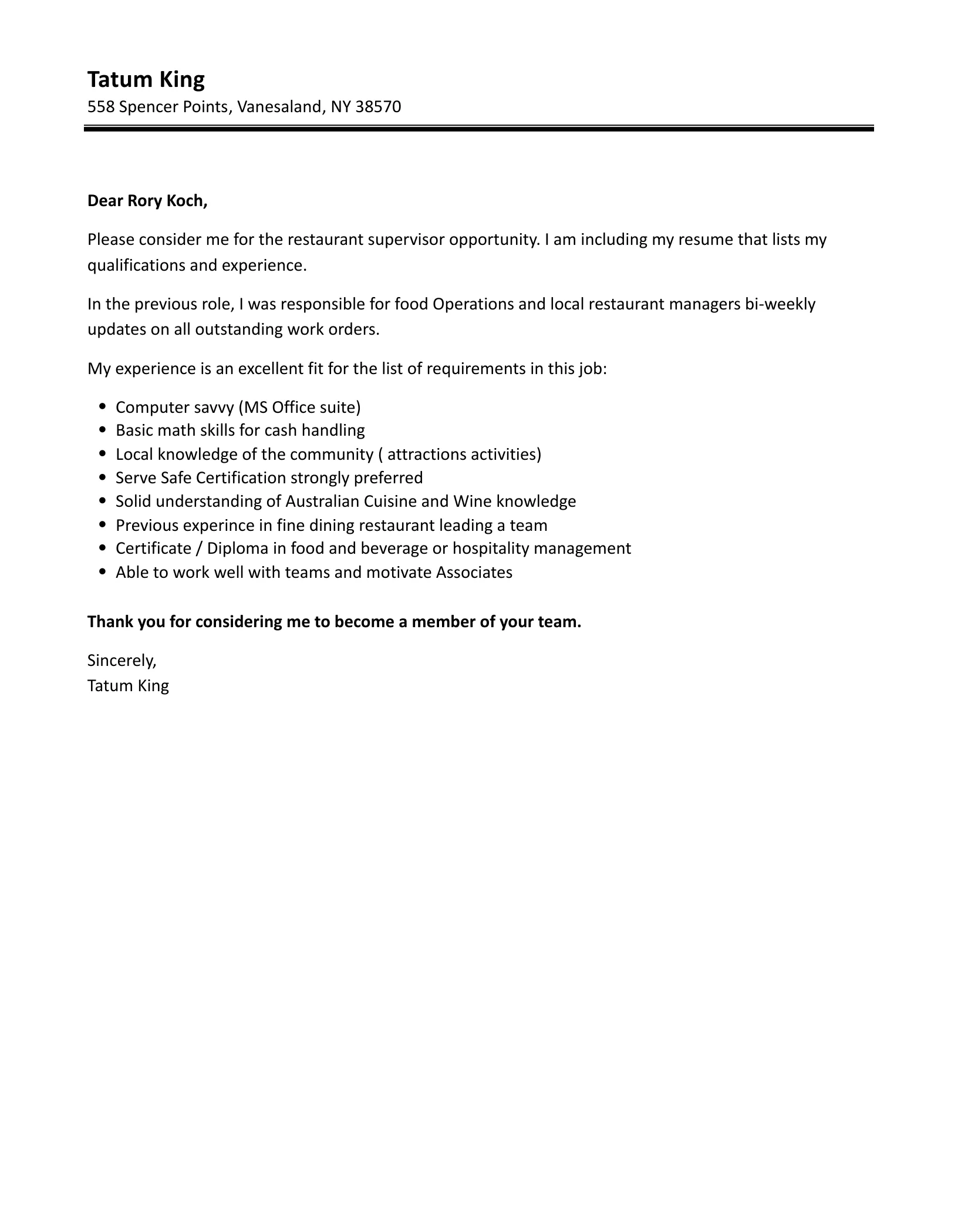
Show your enthusiasm for the restaurant and the role. Explain why you are interested in working for this specific restaurant. Research the restaurant’s values, mission, and culture and incorporate them into your cover letter. Demonstrate your understanding of the industry and your passion for providing excellent customer service. Expressing your enthusiasm will help you make a positive impression on the hiring manager and make you stand out from other applicants. Showing genuine interest in the restaurant demonstrates that you are not just seeking a job, but a career opportunity that aligns with your passions.
Closing Paragraph & Call to Action
Formal Closing
In your closing paragraph, reiterate your interest in the position and thank the hiring manager for their time and consideration. Express your eagerness to discuss your qualifications further in an interview. Include a call to action, such as “I look forward to hearing from you soon.” A strong call to action encourages the hiring manager to take the next step in the hiring process. Ensure your closing is professional and reflects your enthusiasm and respect. A well-written closing paragraph leaves a lasting positive impression and makes it easier for the hiring manager to move forward with your application.
Signature
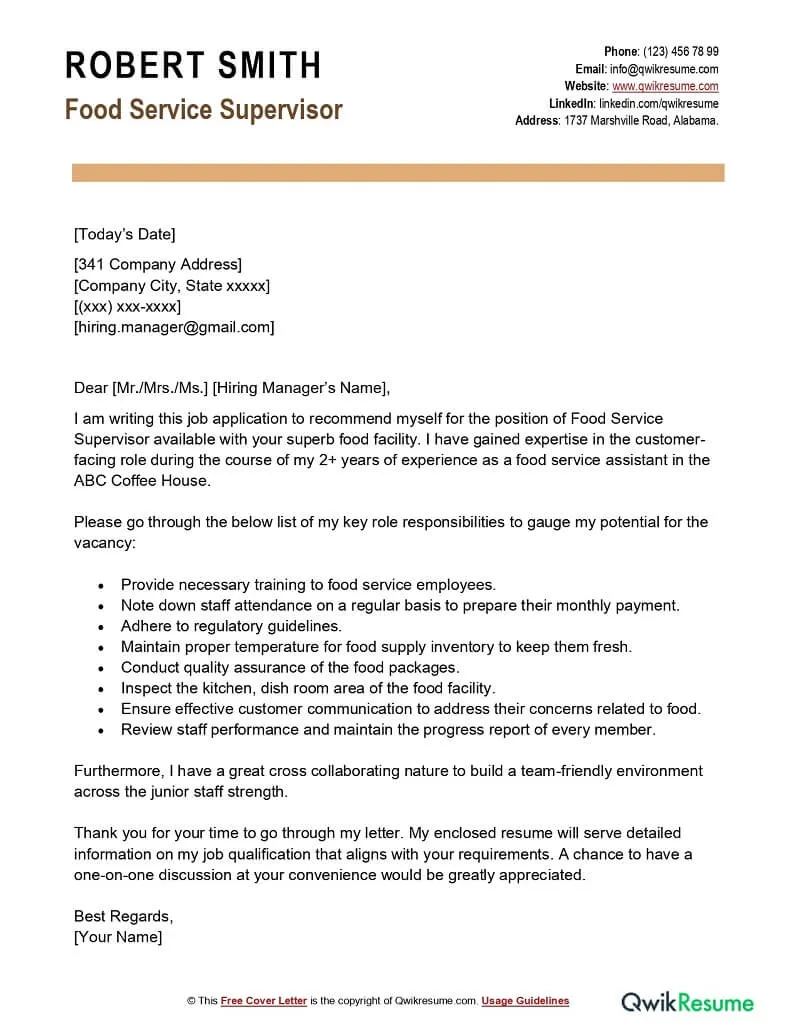
Type your full name below the closing paragraph. If you are printing the letter and mailing it, leave space for your handwritten signature above your typed name. Your signature adds a personal touch and confirms the authenticity of your cover letter. Keep the signature block simple and professional. This final detail shows that you are committed to creating a professional document. It’s an indicator that you are responsible for what is written in the cover letter. It shows you take your job application seriously.
Review and Proofread Your Cover Letter
Before submitting your cover letter, carefully review it for any errors in grammar, spelling, and punctuation. Ensure the formatting is consistent and easy to read. Ask someone else to proofread your cover letter as a second set of eyes can often catch mistakes you may have missed. A polished cover letter shows attention to detail, professionalism, and your commitment to a quality application. Proofreading ensures that your skills and experience are the main focus and are not overshadowed by errors. A well-proofread cover letter indicates that you are attentive to detail and value professionalism.
